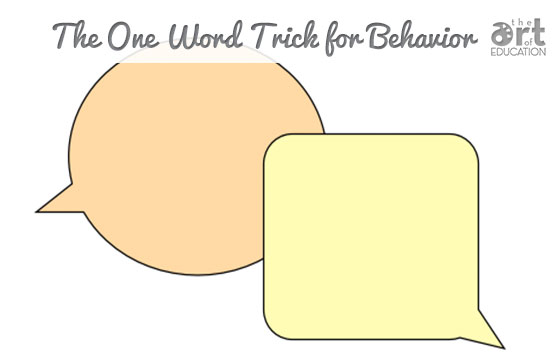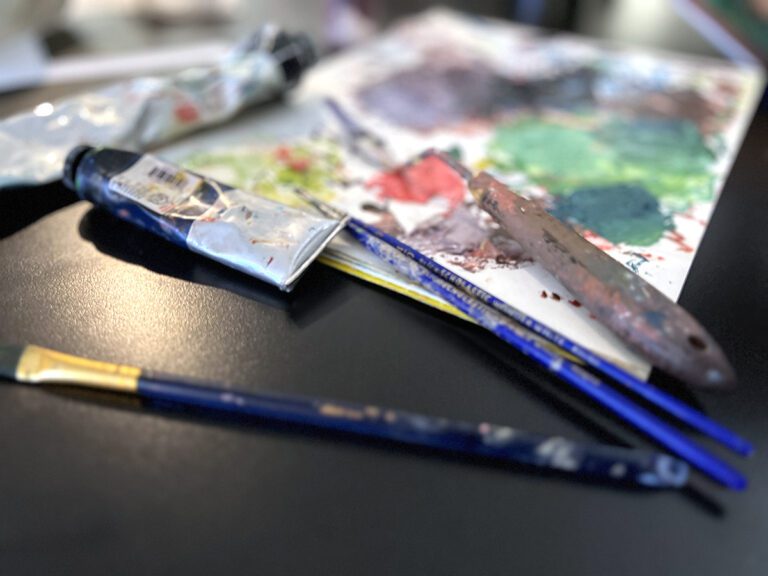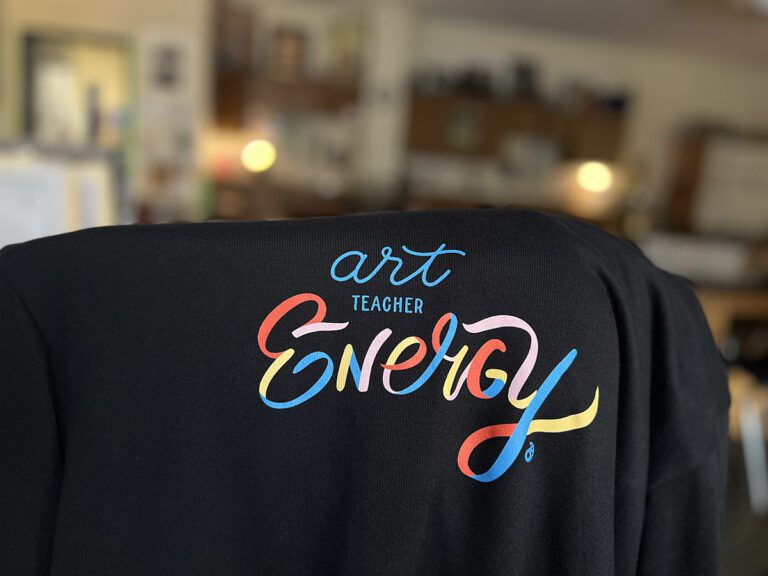This time of year, you may notice students becoming immune to the sound of your voice. Do you find art time gets swallowed up with long drawn out explanations and lectures reviewing procedures, and they still don’t listen? No matter what age level you teach in the art room, this trap will get you every time. Harping on students doesn’t always fix the problem or help students correct the behavior or bad habit for next time. Plus, it’s exhausting. Yikes.
 I might suggest you learn the one word secret.
I might suggest you learn the one word secret.
One word has a lot of power. One word can be just as effective as a long drawn out explanations.
It might look something like this: Instead of saying “Everyone remember the process we use to clean up the tables, we always use a rag, we don’t use paper towels, that is wasteful, and I’ve told you every single art time not to grab paper towels to wipe down the table, we use rags. The rags can be found in the bucket by the sink” (At what point did you tune out? I bet your students do, too!)
Instead, try this.
When you see a student using a paper towel instead of rags (or any other example you can think of with common offenses in your art room) Just simply look at the student and say “Rags” – Believe me, they will know what you mean. Students will soon get accustomed to the one word directions. They already KNOW what to do, they just forget or become careless. If you have already explicitly taught and reviewed your classroom management expectations in the past, they will know the meaning behind this one word.
This tactic can apply to any situation in the classroom and it doesn’t have to be classroom management. It can be during a lesson, or with a skill students frequently forget when working with a particular medium. I hope this idea will streamline your processes, save your voice, and most importantly allow students to have success in the art room.
How could you us this “one word” tactic in your classroom to simplify the way you give reminders?
What are other non-verbal ways you give directions to students?
Magazine articles and podcasts are opinions of professional education contributors and do not necessarily represent the position of the Art of Education University (AOEU) or its academic offerings. Contributors use terms in the way they are most often talked about in the scope of their educational experiences.




